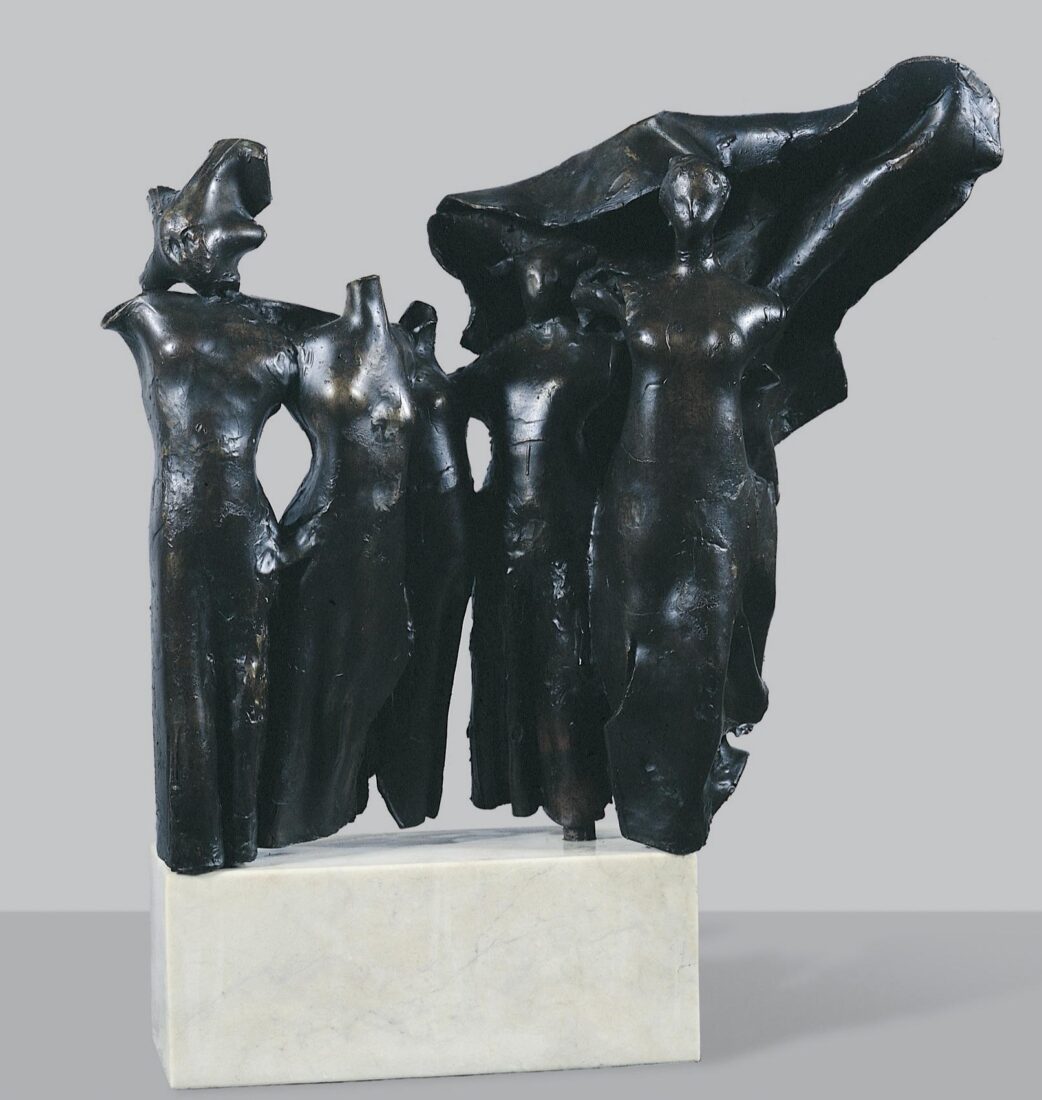We use cookies to make our site work properly, to personalize content and ads, to provide social media features and to analyze our traffic. We also share information about how you use our site with our social media, advertising and analytics partners. Read the Cookies Policy.

Moustakas Evangelos (Vangelis) (1930)
Victory, 1967
Bronze, 46 x 50 x 26 cm
Donated by the Ministry of Culture and Science
The human being – as form or idea – is the focus of Vangelis Moustakas’ sculpture. His subjects, inspired by Greek mythology, Greek or ecumenical reality, as well as his own personal experiences, is a protest against pain, violence and oppression. Ancient Greek models are combined with the trends found in modern art – fragmentation, non-figurative rendition, surrealistic atmosphere – while the light traverses the surfaces by means of alternations of the empty and full spaces of the composition.
The subject of “Nike” (“Victory”) has repeatedly occupied him, as a triumphal response of the human being to pain and death. The “Victory” exhibited at the National Glyptotheque is a composition with five fragmentary figures, with the figure of Nike commanding the right side. Freely exploiting the ancient prototype of the “Nike of Paionios”, it was made in 1967 in recollection of a specific historical event: the victory of the Israelis in the Six Day War of June 1967. For Vangelis Moustakas this event had a particular resonance, as he considers the Jewish people to embody par excellence the pain and tribulation suffered by all humankind. So this Victory expresses the end of centuries of terror.

